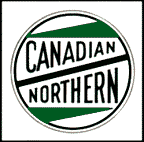| It is currently Thu Apr 18, 2024 9:04 pm |
|
All times are UTC - 5 hours [ DST ] |
Fairbanks-Morse H16-44 or H20-44
Moderators: Rick Rowlands, tomgears, Randy Hees
 
|
Page 2 of 2 |
[ 27 posts ] | Go to page Previous 1, 2 |
|
| Alexander D. Mitchell IV |
|
||
|
Joined: Sun Aug 22, 2004 1:51 pm Posts: 11497 Location: Somewhere east of Prescott, AZ along the old Santa Fe "Prescott & Eastern" |
|
||
| EWrice |
|
||
|
Joined: Wed Jan 15, 2014 9:14 am Posts: 353 |
|
||
| Jdelhaye |
|
||
|
Joined: Mon Apr 30, 2007 12:45 am Posts: 518 Location: Illinois |
|
||
| EJ Berry |
|
||
|
Joined: Fri Dec 22, 2017 6:47 pm Posts: 1404 Location: Philadelphia, PA |
|
||
| SD70dude |
|
|||
Joined: Tue Feb 20, 2018 7:08 pm Posts: 317 Location: Alberta, Canada |
|
|||
| EWrice |
|
||
|
Joined: Wed Jan 15, 2014 9:14 am Posts: 353 |
|
||
| Nova55 |
|
||
|
Joined: Thu Apr 12, 2007 8:09 pm Posts: 563 |
|
||
| LeoA |
|
||
|
Joined: Mon Sep 28, 2015 12:30 am Posts: 290 |
|
||
| Nova55 |
|
||
|
Joined: Thu Apr 12, 2007 8:09 pm Posts: 563 |
|
||
| EDM |
|
||
|
Joined: Sun Aug 22, 2004 9:54 am Posts: 1016 Location: NJ |
|
||
| Overmod |
|
||
|
Joined: Thu May 24, 2012 1:37 pm Posts: 2230 |
|
||
 
|
Page 2 of 2 |
[ 27 posts ] | Go to page Previous 1, 2 |
|
All times are UTC - 5 hours [ DST ] |
Who is online |
Users browsing this forum: Google [Bot], QJdriver and 181 guests |
| You cannot post new topics in this forum You cannot reply to topics in this forum You cannot edit your posts in this forum You cannot delete your posts in this forum You cannot post attachments in this forum |


